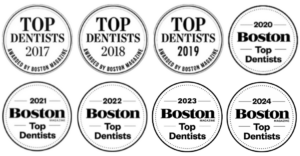What Are the Common Procedures a Cosmetic Dentist Does?
A cosmetic dentist is a professional who enhances the appearance of an individual’s smile. They can perform a variety of procedures, from simple teeth whitening to complete smile makeovers.
Make sure to choose qualified dental professionals to provide you with the care and treatment you need to achieve the smile of your dreams. There are many different procedures that a cosmetic dentist can perform, and the most common ones are described below:
Invisalign
Invisalign is a treatment for teeth that uses clear aligners to move the teeth gradually. The treatment begins with a consultation with an orthodontist or dentist, during which the doctor will examine your teeth and bite and take X-rays and impressions.
They will then create a treatment plan, which will be used to develop your custom aligners. You will have to wear these aligners for 20 to 22 hours a day, and you will need to replace them every two weeks. The treatment will gradually move your teeth into the desired position.
Tooth Bonding
Tooth bonding is when a tooth-colored resin is applied to the teeth and then hardened with a special light. Bonding can be used to repair chipped or cracked teeth, close gaps between teeth, or change the shape of teeth.
After the bonding process, you must avoid eating hard or sticky foods for the first few days to allow the bonding material to fully set. You should also avoid chewing on ice or other hard objects. In addition, it is essential to brush and floss your teeth as you normally would to keep your teeth and gums healthy.
Tooth Whitening
Tooth whitening can be done in an office or at home. In-office tooth whitening is done by a trained professional and usually takes an hour. The procedure entails applying a bleaching gel to your teeth and activated with a special light. At-home tooth whitening kits are also available and usually take about two weeks to achieve the desired results. No matter which teeth whitening option you choose, you must follow the instructions carefully to avoid damaging your teeth.
Veneers
These can be used to change the color, shape, and size of teeth and are often used to close gaps between teeth. Veneers are also used to protect the teeth from damage and wear.
The first step in getting veneers is to schedule a consultation with a cosmetic dentist. They will examine your teeth during the consultation and discuss your treatment options. If you decide to proceed with veneers, the next step is to have your teeth prepared for the veneers.
If you take good care of them, veneers can typically last for many years. Keep in mind, though, that veneers are not as strong as natural teeth, and they are more susceptible to damage. Therefore, it is important to avoid biting your nails or chewing on hard objects. In addition, you should see your dentist for regular checkups and cleanings to ensure your veneers stay in good condition.
Conclusion
Whether you want to whiten, straighten, or repair damage, a cosmetic dentist has the training and experience to give you the smile you’ve always wanted. There are many procedures a cosmetic dentist can do to improve your smile. If you are interested in exploring your cosmetic dental options, schedule a consultation with a dentist today.
Are you looking for a cosmetic dentist in Lexington? Trust Lexington Smile Studio. Established in 1991 by Dr. Fawn Rosenberg, we set the standards for exceptional care, providing a full range of dental services for your entire family. Our dental services include cosmetic dentistry, prosthodontics, implant dentistry, periodontics, and laser dentistry. Book an appointment.



